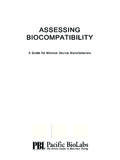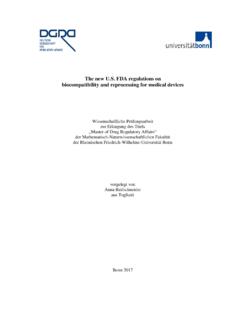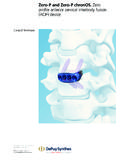Transcription of Scientific compendium - VOCO
1 Admira Fusion Scientific compendium Contents 1. Introduction .. 3. 2. Technical Data Sheet and Indications .. 3. Technical Data Sheet .. 4. Indications .. 5. 3. Physical parameters for marginal integrity of Admira Fusion .. 6. 6. Shrinkage stress .. 7. Modulus of 8. Thermal expansion 4. Biocompatibility of Admira Fusion .. 10. In vitro cytotoxicity test .. 10. Examination of the resin matrix .. 11. Gas chromatography / high performance liquid chromatography .. 12. 5. Physical parameters for strength of Admira Fusion .. 14. 3-point flexural strength .. 14. 3-point flexural strength after thermocycling .. 15. Compressive strength .. 16. Edge strength .. 17. Adhesion values on dentine .. 18. Adhesion values on enamel and dentine .. 19. 6. Physical parameters regarding surface properties of Admira Fusion .. 20.
2 Surface hardness .. 20. 7. Physical parameters for behaviour of Admira Fusion in an aqueous environment .. 21. Solubility in water .. 21. Water absorption .. 22. 8. Handling properties of Admira Fusion .. 23. Light-curing times .. 23. Resistance to ambient light .. 23. Radiopacity .. 24. 9. Clinical studies .. 25. Clinical results of Class II restorations after 6 months .. 25. Clinical Evaluation of ORMOCER Bulk Fill Materials in Class II cavities restored by either incremental or Bulk fill techniques, 6 months results .. 29. Clinical evaluation of Admira Fusion and Admira Fusion x-tra in posterior teeth restorations, 6 months results .. 31. 10. Literature .. 35. 2. Scientific compendium 1. Introduction Admira Fusion is the world's first purely ceramic-based shows the individual components of Admira Fusion in im- restorative material.
3 It unites two outstanding innovations: pressive detail. The glass ceramic particles and nanoparticles nanohybrid technology and ORMOCER technology. In addition (shown in light grey) are firmly embedded in the ORMOCER . to very low polymerisation shrinkage and low shrinkage stress, resin matrix (dark grey). The schematic representation on the the material is characterised by its high biocompatibility, right highlights the similarity of the components once again: which is attributable to the fact that the chemical basis of the chemical basis is always silicon oxide. Another important Admira Fusion is silicon oxide in terms of the fillers (nano factor is that Admira Fusion is a smooth, non-sticky material, and glass ceramic filler particles) and the resin matrix which is easy to use and sets a new benchmark both as far alike.
4 This innovative Pure Silicate Technology makes as its handling is concerned and in terms of its strength and Admira Fusion a purely ceramic-based restorative material for stability. The ease of high-lustre polishing coupled with high the fabrication of high-quality restorations in the anterior and surface hardness and high colour stability guarantee durability posterior regions. The following image shows the matrix of and aesthetics. Admira Fusion. The transmission electron microscopy image Nano particle ORMOCER resin Glass particle Illustration of Pure Silicate Technology Left: TEM image of Admira Fusion at 20,000x magnification (Behrend 2014). Right: Schematic representation of the TEM image with legend. This Scientific compendium provides information on the quality, behaviour in aqueous environments and handling technical properties of Admira Fusion.
5 It presents study data properties of Admira Fusion in detailed comparisons with other on the marginal integrity, biocompatibility, strength, surface leading restorative materials on the market. 2 3. 2. Technical Data Sheet and Indications Technical Data Sheet Admira Fusion Filler content % w/w DIN 51081. Polymerisation shrinkage % v/v analogous Watts et al. Shrinkage stress MPa analogous Watts et al. 3-point flexural strength 132 MPa ISO 4049. Modulus of elasticity GPa ISO 4049: 1988. Compressive strength 307 MPa analogous ISO 9917. Surface hardness MHV University of Rostock, Germany Edge strength N University of Manchester, UK. Radiopacity 305 %Al ISO 4049. Resistance to ambient light 198 s ISO 4049. Water absorption g / mm ISO 4049. Water solubility g / mm ISO 4049. Fraunhofer Institut W rzburg, Thermal expansion coefficient ( ) *10-6 / K.
6 Germany Depth of cure mm ISO 4049. Tensile bond strength to enamel University of S o Jos dos Campos, MPa (with Futurabond M+: self-etch mode) Brazil Tensile bond strength to dentine University of S o Jos dos Campos, MPa (with Futurabond M+: self-etch mode) Brazil 4. Scientific compendium Indications Class I to V restorations Base in class I and II cavities Reconstruction of traumatically damaged anteriors Facetting of discoloured anteriors Correction of shape and shade for improved aesthetic appearance Locking, splinting of loose anteriors Repairing veneers, small enamel defects and temporary C&B-materials Extended fissure sealing Restoration of deciduous teeth Core build-up Composite inlays 4 5. 3. Physical parameters for marginal integrity of Admira Fusion Shrinkage Measurement procedure Results The volume shrinkage during polymerisation was determined in At just % by volume, Admira Fusion is the material with accordance with the bonded-disc method described by the lowest volume shrinkage compared with the other restora- Prof.
7 Watts (University of Manchester). [1-3]. A disc-shaped test tive materials studied. specimen of the restorative material with a diameter of approx. 8 mm and a thickness of approx. 1 mm was light-cured from below for a total of 40 seconds (Celalux 2, Softstart, VOCO). From the beginning of the light-curing, the polymerisation shrinkage was recorded with a sensor from the opposite side (top surface) for a period of 30 minutes. [% v/v]. 0. Admira Ceram X Estelite Filtek Herculite Kalore Premise Spectrum Synergy Tetric Venus Fusion Mono Quick Supreme XRV Ultra TPH3 D6 EvoCeram Diamond XTE. Volume shrinkage of various restorative materials during light-curing (VOCO 2014). Literature [1] Kim SH, Watts DC, 2004. [2] Watts DC, Cash AJ, 1991. [3] Watts DC, Marouf AS, 2000. 6. Scientific compendium Shrinkage stress Measurement procedure Results The shrinkage stress following curing was determined in ac- The shrinkage stresses were around 6 MPa for the majority cordance with the bioman method described by Prof.
8 Watts of the tested materials. Of all the restorative materials tested (University of Manchester). [1-2]. The method involves curing a here, Admira Fusion has the lowest shrinkage stress of just cylindrical sample of the material with a height of mm MPa. and a diameter of 8 mm from below through a fixed glass plate for 40 seconds. On the top surface of the resin-based restor- ative material is a steel cylinder connected to the measuring apparatus and roughened in advance with a sandblaster. The force exerted on this cylinder is recorded for a period of 30 minutes and then the resulting polymerisation stress of the restorative material is calculated. [MPa]. 9. 8. 7. 6. 5. 4. 3. 2. 1. 0. Admira Ceram X Estelite Filtek Herculite Kalore Premise Spectrum Synergy Tetric Venus Fusion Mono Quick Supreme XRV Ultra TPH3 D6 EvoCeram Diamond XTE.
9 Extent of the shrinkage stresses [MPa] of the tested restorative materials (VOCO 2014). Literature [1] Watts DC, Satterthwaite JD, 2008. [2] Watts et al., 2003. 6 7. Modulus of elasticity Measurement procedure Results The modulus of elasticity was determined from the measure- With a modulus of elasticity of GPa, Admira Fusion is in ments of the 3-point flexural strengths by calculating the the upper middle range of the comparison shown here. gradient in the linear range of the corresponding flexural strength measuring curve.[1]. [GPa]. 18. 16. 14. 12. 10. 8. 6. 4. 2. 0. Admira Ceram X Estelite Filtek Herculite Kalore N Durance Premise Spectrum Synergy Tetric Venus Fusion Mono Quick Supreme XRV Ultra TPH3 D6 EvoCeram Diamond XTE. Modulus of elasticity [GPa] of different restorative materials (VOCO 2014).
10 Literature [1] Ilie N, 2004. 8. Scientific compendium Thermal expansion coefficient Measurement procedure Results Test specimens measuring 2 2 30 mm are prepared for The coefficients of thermal expansion of dentine and the measurement of the coefficient of thermal expansion . enamel are specified in the literature as *10-6 / K and The linear expansion of these specimens is determined with *10-6 / K respectively.[2] Admira Fusion is not quite able a connecting rod dilatometer in a range of 25 C - 50 C at a to match these values, but replicates the natural expansion heating rate of 1 Kelvin / minute. [1]. and contraction behaviour of natural tooth hard substance considerably better than the other materials tested. This minimises the stress imposed on the margins of restorations by the thermal expansion. [10-6 / K].





